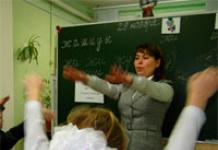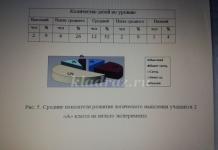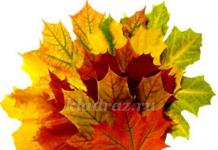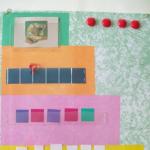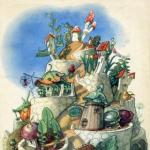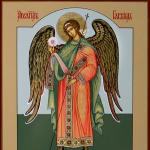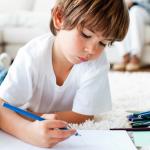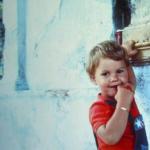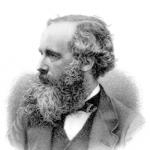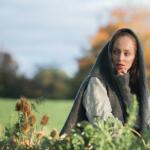Victoria Kiryukhina
Project in the second junior group “Autumn”
Project theme: “Autumn”
Age group: children from 3 to 4 years old
Problem.
With the development of information technology and in conditions of increased employment of parents, children are limited in communication with nature and society, and have poor ideas about the natural world, about the processes occurring at certain times of the year, which significantly distorts the picture of the world around them.
Relevance
The severity of the problem between man and nature is due to a real environmental problem. An environmental problem is a change in the natural environment as a result of anthropogenic impact or natural disasters, leading to disruption of the structure and functioning of nature. A significant danger to nature is created by man through his activities, the growth of industrial production, and the use of natural resources without taking into account environmental and biological laws.
Modern problems of human relations with the environment can be solved only if they develop environmental literacy and culture, and understand the need to implement the principles of sustainable development. Communication with nature, knowledge of its secrets ennobles a person, makes him more sensitive. The more we get to know nature, the more we begin to love it. Nurturing a careful and caring attitude towards living and inanimate nature is possible when children have at least basic knowledge about them, master simple ways of growing plants, caring for animals, observing nature, and seeing its beauty.
This project allows, in the educational process of a preschool educational institution, to expand, deepen, systematize and creatively apply children’s knowledge about seasonal changes in nature.
Project type: cognitive - playful, creative.
Project participants: teacher, children of the second younger group, parents.
Implementation deadlines: medium term.
Objective of the project: familiarizing children with nature in all its manifestations in the autumn period, with changes in living and non-living nature, highlighting the distinctive features of the autumn period from other seasons, as well as promoting the creative expression of children in productive activities.
Tasks:
Educational.
Expanding children's knowledge about the signs of autumn;
Formation of the ability to display the mood of autumn in creative works;
Expand your understanding of seasonal changes in nature;
Deepen children's knowledge about the life of birds and animals in the autumn;
Developmental.
Develop artistic taste, aesthetic sensitivity and creativity of children;
Develop and enrich vocabulary on the topic of the project, monologue and dialogic speech.
Develop cognitive activity.
Educational.
Cultivate a desire to learn more about the features of nature.
Foster a caring attitude towards nature;
Cultivate hard work.
Educational project hypothesis:
The project will help you study the main signs of autumn more deeply and clearly, and expand your knowledge about your native nature. Children will learn to appreciate and protect nature. Improve relationships between adults and children, and children among themselves in the process of performing collective work.
Project methods:
Visual: observations, excursions, photographs, paintings, books, etc.
Verbal: Conversations, reading fiction
Research: search for materials, productive activities
Gaming: Role-playing games, educational games, sports games
Final event: making a seasonal tree.
Project implementation stages
Stage I: preparatory
1. Development of a comprehensive thematic planning model for the project topic.
2. Preparation of material for the implementation of the project:
Selection of methodological, popular science, reference and fiction literature, illustrative material, manuals, games on this topic, production of manuals;
Preparation of materials for productive activities;
Selection of materials, models, toys, attributes for gaming and educational activities.
3. Awareness of parents about upcoming activities:
Design of a mobile folder, placement of information on the subject of the project;
Discussion with children:
How is autumn different from other seasons? What changes occur to plants and animals with the arrival of autumn?
Stage II: main
Project implementation.
Educational field "communication"
“When does autumn come?”
"Plants in autumn."
"Migratory birds".
"Animal life with the onset of autumn."
“How to distinguish autumn?”
"Autumn flowers".
"Autumn Holidays".
Writing stories about the season of autumn. Inventing fairy tales about autumn.
Speech games:
“Various questions” (What grows on a branch? Where do the branches grow? Who lives on the tree, etc.) “One and many” (rain - rains, nest - nests, icicle - icicles, leaf - leaves, insect - insects , tree - trees, etc.)
Educational field "cognition"
Looking at the paintings:
Alexey Savrasov. "Painting. Autumn”, Victoria Belova. “Autumn”, I. Brodsky. “Late Autumn”, I. Shishkin. "Golden Autumn", Isaac Levitan. "Gold autumn".
Looking at pictures, illustrations, photographs in autumn.
Getting acquainted with photographs about the life of animals and plants in the autumn period.
Excursions around the territory of the kindergarten to identify signs of autumn.
Experiments:
Frozen water (freezing colored water).
Experiment with leaves.
(Goal: to show what color the leaves will have without chlorophyll.
Materials: leaves, jar, medical alcohol, filter, plastic bag.
Progress of the experiment:
Ask your child to tear the leaves into a jar. Fill with alcohol. Crush the leaves well so that the alcohol turns green. Cover with a bag and place everything in a bowl of hot water. Let's wait 1 hour, you can sometimes open the jar at this time, crush the leaves so that they give off more color.
We insert the filter into the jar so that it absorbs the alcohol. Then, when the alcohol is absorbed, we leave the filter to dry - about an hour. And let's see what colors remain.)
Formation of a holistic picture of the world.
Observations on the walk:
Frozen puddles;
Examination of leaves of maple, rowan, birch;
Weather monitoring; beyond the sky; sun, etc.
Observation of flowers (asters, marigolds, dahlias, snapdragons).
Bird watching;
Insect observation;
Clothing in autumn;
Reading fiction:
A. S. Pushkin "Sad time! Charm of the eyes",
"Already the sky, autumn was breathing"
F. Tyutchev "There is in the primordial autumn"
N. A. Nekrasov “Uncompressed strip”, “Glorious autumn”
S. Yesenin "The fields are compressed. The groves are bare"
M. Yu. Lermontov “It’s lonely in the wild north”
A. N. Pleshcheev “Autumn has come, the flowers have dried up”
A. Maikov "The golden leaf is already covering"
A. A. Fet "The Swallows Are Missing"
A. K. Tolstoy “Autumn is falling all over our poor garden”, “Autumn”
I. Bunin "Thicket of the Forest"
Nursery rhymes: Let's get dressed, my friend,
Leaf fall, leaf fall,
Autumn, autumn - leaf fall
We'll tell the baby
A leaf is flying
Autumn, autumn, don’t rush,
Goo-goo-goo, goo-goo-goo,
The birds will fly south
Folk signs and sayings about autumn.
Memorizing poems about autumn:
V. Berestov “October”
I. Vinokurov “Autumn”
A. Erikeev “Autumn has come.”
Artistic creativity:
Drawing:
"Autumn Leaf"
"Tree in Autumn"
Application:
"Apples on a plate"
"Autumn leaves"
"Pock"
"Fungus"
"Apples"
"Bullfinch"
Paper construction: “Bird”, “Boats”
Work.
In a corner of nature:
Watering the flowers;
We loosen the ground.
Location on:
We pick dried flowers;
We insulate tree roots;
Cleaning leaves.
Socialization.
Didactic games:
“When does this happen?”, “Whose trace?”, “What kind of bird?”, “Name the plant,” “Guess the animal”
Role-playing game:
“At the dacha”, “Shop”.
Physical Culture.
Outdoor games:
Catch the bird on the fly.
Children wear hats with pictures of birds on their heads. The text addressed to the trap (driver) is pronounced:
We are small birds,
We love to fly across the sky,
Try to catch up with us.
The trap (driver) will catch up with the birds. Anyone affected by it is eliminated from the game.
Autumn leaves.
The game involves 3 people. Paper leaves of maple, birch, and rowan (all in the same quantity) are scattered around the hall. Children are given a bucket or basket. At a signal, one collects only maple, the second - rowan, and the third - birch. The one who completes the task faster wins.
Pick mushrooms.
Paper mushrooms are laid out on the floor. On command, the children begin to collect them. Who is bigger?
Sedentary games:
1,2,3 – name the signs of autumn.
Children line up in a circle, the teacher stands in the middle of the circle, throws a ball to each child (in different ways) - the child throws the ball back, naming a sign of autumn, for example, rain.
Practice throwing and catching the ball.
Reinforce the signs of autumn.
Music.
Round dance games: Autumn has come to visit us
Learning songs about autumn.
Listening to music.
Health and safety.
Finger games.
Finger game “Autumn”, “Collecting leaves”, “Fingers went for a walk”, “Autumn is coming in our park”, etc.
Breathing exercises:
The leaves are rustling
They offer strips of thin colored paper, cut into leaf shapes and attached to a “branch.” At the signal “the breeze has blown,” the child gently blows on the leaves so that they bend and rustle.
"Dangerous Plants";
"Poisonous mushrooms";
"Dangerous Icicles";
"Poisonous Berries."
"Thin Ice"
Interaction with parents: collecting illustrations, pictures, photographs, selecting material for a seasonal tree.
Organizing the collection of natural materials with children;
Stage III: Final
Awareness of parents about the results of the project through the productive activities of children;
Presentation of the seasonal tree;
Drawing up a report on the work done;
Conclusions and results
Thanks to this project, children gained new knowledge, expanded their horizons and ideas about the world around them. We understood that we need to love and protect nature, and not destroy it. Reinforced knowledge about the season - autumn. Parents became interested in the results and products of the project.
Summary of educational activities for familiarization with the environment in the second junior group.
Author: Shestakova Svetlana Viktorovna, teacher of the 2nd category of the first junior group, MKDOU kindergarten No. 11 "Alyonushka", the city of Birobidzhan, Jewish Autonomous Region.Summary of educational activities for speech development in the second junior group on the topic: "Autumn."
Description of material: I offer you a summary of direct educational activities on speech development for children of primary preschool age. This material will be useful for teachers of early preschool age. This summary is educational and educational in nature, aimed at developing coherent speech; enrichment of vocabulary.Direction: speech cognitive, physical culture, social and communicative development.
Integration of areas:
1 Reading fiction (poems and riddles)
2 Communication (talking about observations)
3 Health (breathing exercises)
4 Physical education (games)
5 Artistic creativity (visual material - photos and presentation slides)
6 Music (reproduction of sounds: rustling leaves, birdsong, song about autumn)
Target: consolidation of ideas about autumn, about the signs and signs of autumn.
Tasks:
- Developmental: develop cognitive interest in the life of the forest and its inhabitants, develop memory, coherent speech, and the ability to listen to each other. Practice naming baby animals in singular and plural using suffixes.
- Educational: contribute to the deepening and generalization of knowledge about wild animals, trees, continue to introduce the characteristic features of the seasons - autumn, with the rules of behavior in the forest, teach how to measure one object with another in height.
- Educational: to cultivate interest in the life of the forest, the ability to behave in the forest, to cultivate love and respect for nature, to show care and attention to all living things, to develop goodwill.
Methods and techniques:
- Visual: looking at toys, paintings.
- Verbal: literary words, riddles, questions for children, tips, encouragement.
Preliminary work:
Observing the weather, reading poems about autumn, showing illustrations and photographs of autumn.
Children's games: “Find Mom”, “Collect the Whole”, “Who Lives Where”, “Who Eats What”.
Equipment: replicas of trees (fir trees, birches), toys (gnome, hare, squirrel, hedgehog, bear), video presentation, colorful leaves, mushrooms, tree branches)
Progress: Kids, listen, who's rustling there? You hear?
Oh, yes, this is a gnome, a forest man. Let's say hello to the gnome. What kind of gnome? (small) What do you think the gnome is in? (good) Of course, it’s good, the gnome smiles at us, let’s smile and pet him too.
Oh, look, what did the gnome bring us? (leaves)

What leaves? (beautiful, colorful, red, yellow, green). At what time of year are there colorful leaves? (in autumn) So what kind of leaves? (autumn) That's right, kids, these are autumn leaves. They are all cheerful colors, golden, so they say about autumn: “Golden autumn.” What is autumn? (golden)
Listen to what poem the gnome knows about autumn:
"Autumn is golden
Walks along the paths.
On her legs
Yellow boots.
On her dress
Colored leaves,
And in her basket
There are forest mushrooms!”
Guys, do you like autumn? The gnome says that this is his favorite time of year. Why do you think they love autumn? (beautiful, colorful leaf fall, etc.)
Do you want to visit the autumn forest? (offer to close your eyes - after all, the gnome is a wizard and we will find ourselves in the autumn forest where the gnome lives)
Let's say the magic words:
“I’ll slam, I’ll stomp, I’ll turn around.
And I’ll immediately find myself in the forest.”
Children, open your eyes, look how beautiful it is.

Let's sit quietly on the stumps and see what's happening in the forest. (Watch the video) What do you hear? (the forest rustles, the breeze blows leaves, birds sing)

What trees? (colorful, beautiful) What other trees? Are they all the same? (no, there are high and low ones - they show) What kind of animals do you think live here? (list) In a word, what can you call them, what kind of animals? (wild) Smart guys, why were they called that? (because wild animals get their own food, people don’t help them) Guys, what do animals do in the fall? (preparing for winter). How do you think one should behave in the forest? (quietly, don’t make noise, don’t shout, so as not to scare the animals).
Let's take a walk in the forest with you.
“Leaves are falling, leaves are falling, yellow leaves are flying, multi-colored leaves are rustling under the children’s feet.” (sound - rustling of leaves).
Children, look, who’s sitting there under the Christmas tree?

“He lives in the forest under a Christmas tree,
Carrying sharp needles.
Walks and wanders along the paths
All the prickly brother..." (hedgehog)
What hedgehog? (small, prickly)
Guys, how does a hedgehog prepare for winter? (eats insects, bugs, worms, collects mushrooms and berries, leaves for insulation of the mink) Children, let's help the hedgehog and collect leaves so that he will be warm in winter, only they need to be collected correctly, yellow leaves in one basket, and red leaves in another ) What a great fellow you are and the hedgehog says thank you very much.
Oh, guys, look, who’s there jumping on the branches so deftly?

"Red little animal
Jump and jump through the trees.
He doesn't live on earth
And in a hollow tree.” (Squirrel)
Let's come closer, which squirrel? (small, red-haired) Where does the squirrel live? (in the hollow) Let's look into the hollow, oh, she's not alone here, who's there? (squirrels). How does a squirrel prepare for winter? (collects cones, mushrooms, berries) Let's help the squirrel, collect mushrooms and hang them on branches.

Game-exercise “Stringing mushrooms on a rope.” Squirrel says thank you very much. Go ahead…
Listen to the riddle:
“The scythe has no den,
He doesn't need a hole.
Legs save you from enemies,
And the bark is from hunger.” (Hare)

Look who's peeking out from behind the tree? Let's come closer. Who is this? (hares) What are they? (small) How many are there? (a lot of). Let's pet them. What kind of fur do they have? (soft, smooth). How do hares prepare for winter? (change their fur coat) What do hares eat? (bark and twigs from trees). Let's help the bunnies - collect twigs and break them for lunch, before the mother hare returns, she will have a surprise.
And now, guys, I suggest you sit on the stumps and relax. I draw the children’s attention to the image of a mother bear and cubs (on the screen). What kind of forest animal is this? (bear) What are the names of bear cubs? (cubs)

Do you know how a bear prepares for winter? (eats a lot of berries, fishes in the river, accumulates fat for the winter) Where does the bear live? (in the den).
Physical education with a toy:
The bear crawled out of the den
Looked around at the threshold (turns left and right)
Stretched slowly
Autumn has come to us (stretching - hands up)
To quickly gain strength
The bear turned its head (head tilted to the right, left)
Leaned back and forth (leans forward, backward)
Here he is walking through the forest (swaying to the sides)
The bear is looking for roots
And rotten stumps
Finally the bear had his fill
And he sat down on a log (the children sit down)
Let's put our bear to sleep in his den. But first we’ll lay down some leaves to keep him dry and warm. Rest, Misha.
It felt good in the forest, quiet, calm. The gnome says that it’s time for the children to rest. Let's sit down in the clearing and sing a song about autumn.
So our journey through the forest ended. Guys, did you like it in the forest? Who did we help today? You tried very hard and the wild animals are grateful to you for your help! And they prepared gifts for you. (sweet mushrooms) Let's say goodbye to the gnome and promise to come visit again.
“Turn around yourself and find yourself in kindergarten again”
Thank you all for your attention, we say goodbye!
I present a summary of a subgroup speech therapy lesson in the second junior group on the topic “Autumn.” The lesson is aimed at developing the speech sphere and mental processes (visual perception).
The lesson notes will be of interest to speech therapists, teachers of mass and special kindergartens.
Subgroup speech therapy session in the second junior group.
Topic: “Autumn, Trees”, 1 lesson on the topic.
Goal: enriching knowledge on this topic.
Educational:
- enrich and clarify the vocabulary on this topic,
- introduce the signs of autumn,
- fix the names of the colors.
Corrective development:
- develop gross motor skills,
- learn to use relative adjectives,
- enrich the verb vocabulary,
- develop a directed air stream,
- develop visual perception.
Educational:
- arouse interest in the activity,
- cultivate a caring attitude towards nature.
Equipment: leaves made of colored paper (red, yellow, green), 2 cut pictures, subject picture “Autumn”, hero Lesovichok, subject pictures (birch, maple)
Speech material: maple, birch, maple, birch, falling, stepped, yellowed, multi-colored, colder.
Progress of the lesson:
Organizing time.
Hello guys. My name is... Stand in a circle. Look at me. Guys, can you hear who is rustling? This is Lesovichok!
Studying a new topic.
Walk like a train to the window.
Tell me, what time of year is it now? - Autumn. How did you guess?
The birds flew away because autumn had come.
There are puddles on the street because it started raining.
People started getting dressed because it was getting cold.
The leaves have begun to fall. Leaves began to fall from the trees.
Mushrooms began to grow in the forest. Is it autumn outside? Why?
Let's look out the window and talk about what we see there. What is the weather like today: sunny or rainy? Solar. Indeed, sunny. Were you cold when you went to kindergarten?
Now look at this picture, is it autumn here? Why?
Physical exercise.
Drop once, (jumping on tiptoes, hands on belt)
Drop two, (jumping on tiptoes, hands on belt)
Very slowly at first. (4 jumps on toes, hands on belt)
And then, then, then (8 jumps on toes, hands on belt)
Everybody run, run, run.
We opened our umbrellas (spread our arms to the sides)
Sheltered herself from the rain. (close your hands above your head in a semicircle)
Guys, Lesovichok wants to show you pictures.
The speech therapist shows a picture of a birch tree.
What kind of tree is this? (Birch). What are the leaves of birch called? (birch)
What kind of tree is this? (Maple). What are maple leaves called? (Maple)
There are already a lot of yellow leaves on the maple tree. Why?
Autumn has come.
Right. Autumn came, and the leaves on the trees began to turn yellow and red. The leaves will begin to fall soon. The breeze blew and leaves flew into our window. Look what color they are?
The speech therapist gives each person a piece of paper.
Let us turn into the breeze and blow the leaves off our palms without puffing out our cheeks.
Physical exercise.
The wind blows in our faces
And the tree shakes.
The wind is getting quieter, quieter,
The trees are getting higher and higher,
The wind died down completely -
And we will all play!
Continuation of the stage of learning new material.
Guys, the wind blew so hard that the pictures scattered. Let's collect them.
The speech therapist gives each child a part of the overall picture.
Summing up the lesson.
What did you like today?
Praise every child.
Makarova Anastasia Sergeevna,
teacher-speech therapist at a private school named after. M.V. Lomonosov,
Nizhny Novgorod
Goals:
* expand children's understanding of the natural environment;
* consolidate impressions from observations of autumn phenomena in nature: yellowing foliage, leaf fall, mushroom picking;
* we continue to develop visual perception and attention;
* consolidate knowledge of colors (red, yellow);
* develop the ability to work in a team.
The teacher gathers all the kids.
Educator: Do you remember how you observed the autumn “miracle tree”, what color were the leaves on the tree?
Right! Yellow, red. Summer has passed, autumn has come. It’s cool in autumn, the leaves on the trees are no longer green, but yellow and red. The sky in autumn is dark, there are clouds on it, the wind is blowing, and the leaves are flying off the branches, it is raining.”
* * *
Leaves are falling, falling,
It's leaf fall in our garden.
Red, yellow leaves
They curl and fly in the wind.
The teacher takes the Katya doll and begins a conversation with the children about it: “Children, look, the Katya doll is getting ready for a walk.”
The teacher offers to look at how the Katya doll is dressed and asks questions.
Educator: Children, who came to us?
Children: Katya has arrived.
Educator: Where does Katya want to go?
Children: For a walk.
Educator: Look what Katya is wearing?
Children: Jacket.
Educator: Are there sandals for Katya?
Children: No.
Educator: Katya is not wearing sandals, Katya is wearing boots.
Educator: Children, look at the picture Katya brought us!
The teacher shows the kids a bright picture depicting an autumn landscape and children: a girl who found a mushroom; boy with a basket of mushrooms; hedgehog running through autumn yellow leaves.
Educator: That's how much joy autumn has brought us!
The teacher gives each child the opportunity to look at a beautiful picture and reads O. Vysotskaya’s poem “Mushroom”
We'll go to the woods
We'll find the fungus
In a smart hat,
Light chocolate.
Don't hide, fungus,
Under the leaf your side,
The guys need you
In the evening for dinner.
Then the teacher hands out baskets to the children and invites them to play.
Educator: children, I invite you to the autumn forest to pick mushrooms!
A scene of a walk into the forest is played out. Children walk along the “bridge”, “step over the grooves”, “listen to the sounds of the forest” (leaves rustle, birds sing, a hedgehog rustles in the leaves).
Next, the teacher invites the children to look for mushrooms ( Before the lesson, the teacher placed mushrooms throughout the group room). Children look under chairs, under leaves, and find mushrooms. The teacher emotionally plays out the search for mushrooms: “Artem found a yellow mushroom, and Nastya found a red one!” and then, gathers the kids around him and asks them to show what mushrooms they found. The mushrooms are laid out on a large dish: “Look, how many mushrooms we picked!”
The teacher shows the children object pictures that depict autumn signs, talks about them one by one: 1 - “It rains in autumn”, 2 - “A strong wind blows”, 3 - “Leaves are falling from the branches”, 4 - “The sky is dark, clouds." After looking at the subject pictures, the teacher reads a nursery rhyme about autumn and performs game movements as they read; the children perform the actions together with the teacher
Rain, rain,
Wait! ( wag your finger)
We're tired of rain!
You frequent the rooftops, ( tap your finger on the table)
I woke up the kids. ( rotate the hands of both hands raised up)
Rain, rain,
Have pity!
Don't flood our roads!
The teacher invites the children to open the box that the Katya doll brought and tell them what is in it.
Educator: Children, look what's in the box?
Children: Leaves.
Educator: That's right, autumn leaves.
Then the teacher blows on the leaves and scatters them on the floor.
Educator: A strong cold wind scattered the leaves in different directions. Children, collect autumn leaves scattered by the autumn wind and put them on the table.
The lesson ends with a poem:
Leaf fall, leaf fall!
Leaves are flying in the wind.
Leaves are flying in the wind
Right under the guys' feet.
teacher of MBDOU No. 6 "Romashka"
Mezhdurechensk, Kemerovo region, Russia
You can read and discuss more interesting information on the forum
Lesson notes for the second junior group
"Gold autumn"
Target:
To form in children ideas about natural phenomena and their relationships (autumn)
Educational objectives:
Strengthen the ability to identify seasonal changes (autumn - it is raining, a strong wind is blowing, leaves are falling, people in warm clothes, birds flying away).
Strengthen the ability to understand general words (vegetables).
Continue learning to recognize and name geometric shapes (circle, square, rectangle).
Strengthen the ability to group homogeneous objects according to color characteristics.
Developmental tasks:
Develop the ability to listen to the teacher and answer questions.
Continue to develop children's speech: the ability to construct sentences, pronounce words correctly and clearly, expand and activate vocabulary (leaf fall, birds flying away, harvest)
Develop auditory perception: recognize the sound of wind and rain.
Develop memory, imagination, logical thinking, intelligence.
Educational tasks:
To develop the ability to notice the beauty of autumn nature.
Teach children to communicate calmly and develop a friendly attitude towards each other.
Arouse children's interest, emotional response, and desire to help an adult.
Methodical techniques:
Visual: slides “Nature in Autumn”, pictures about the seasons, “Sun”, autumn leaves, geometric shapes, models of vegetables, umbrella, computer projection.
Verbal: “The minute of entering the day”, reciting the poem “Sun”, physical education lesson “We have a vegetable garden”, questions and answers about the signs of autumn.
Practical: didactic game “Geometric Shapes”, use of audio recording with the noise of wind and rain.
Game: physical education lesson “We have a vegetable garden”, didactic games “Collect a bouquet”, “Vegetables”, “Find the extra”, “Magic rain”.
Preliminary work
Looking at pictures depicting autumn, winter, sun, children, windows, looking at autumn leaves, vegetables, talking about autumn, reading poems: “Good morning” by E. Blaginin “Sun”, G. Boyko “Sunny Bunnies”, A. Brodsky “Autumn Signs”, L. Preobrazhenskaya “One, two, three, four, five...”, N. Nischeeva observations in nature (leaf fall, wind, rain, seasonal clothing, birds flying away); memorizing the poem “Sun”, physical education lesson “We have a vegetable garden”, low mobility game “Stand up, children, stand in a circle”, familiarization with geometric shapes (circle, square, rectangle), observing transport, conducting didactic games “Cut pictures” , “Find the same one.”
Materials and equipment
Laptop, projector, screen, slides depicting the sun, window, children, autumn phenomena (the wind is blowing, it is raining, people dress warmly, birds flying away, leaves falling), depicting two seasons (autumn, winter); autumn leaves - red, yellow, brown (according to the number of children), vases - red, yellow, brown; vegetables (potatoes, onions, cucumbers, tomatoes, cabbage, beets, peppers, carrots, eggplant), basket, geometric shapes (circle, square, rectangle) according to the number of children, umbrella with raindrops.
Progress of the lesson
The teacher invites the children to stand in a circle and offers them a “Minute to Enter the Day”
Stand up, children, stand in a circle.
You are my friend and I am your friend.
Let's hold hands tightly
And let's smile at each other!
Children stand near the teacher.
Educator. Guys, look what day is it today?
Children . Cloudy.
Educator. What are we missing?
Children. Sunny.
Educator . Let's invite him to visit. And pictures will help us with this. I will show, and you will speak. (for each picture shown by the teacher, the children recite a line of the poem.
Sunshine, sunshine,
Look out the window
Look at the guys
And dedicate it to the guys.
Educator. So the sun came out. What is it like?
Children . Cheerful, joyful, radiant. (Children sit on chairs)
Educator . I walked along the streets and collected leaves. I collected everything in a bouquet and brought it to the children. What color are they?
Children. Red, yellow, brown.
Educator. Why did they become like this?
Children. Autumn has come.
Educator . What else happens in the fall?
Children . It's raining, a strong wind is blowing, and it's cold outside.
Educator. Let's look at the screen. (slide show about autumn phenomena.
Educator. "Autumn Signs"
1st slide - autumn tree.
The thin birch tree is dressed in gold,
So the sign of autumn appeared.
2nd slide - rain.
The rain sows drops
All day from dawn
This rain too
Sign of autumn.
3rd slide - the wind lifts the leaves.
Wind leaves from branches
Scattered around the world.
This is also, you know,
Sign of autumn.
4th slide - schoolchildren with briefcases.
The children are all with briefcases...
Everyone knows: this is
Coming autumn
A sure sign.
5th slide - leaf fall.
All the trees fall asleep
Leaves fall from the branches.
6th slide - birds fly away.
Birds fly away
To the land of warmth and light,
Here's another one for you
Sign of autumn.
Educator. Oh, guys, the wind blew all the leaves! They are so beautiful, let's collect them and put them in a vase. Each leaf has its own vase.
Children complete the task, the teacher specifies the color of the leaves and vases. When the children have collected all the leaves into a bouquet, the teacher asks them to remember a poem about autumn leaves.
One two three four five,
We will collect leaves.
Birch leaves, rowan leaves,
Poplar leaves, aspen leaves,
We will collect oak leaves,
We'll collect an autumn bouquet for mom.
Educator (draws the children’s attention to the pictures on the projector screen). Guys, look how beautiful autumn is in the pictures. But it seems to me that some picture is superfluous here. Help me find her.
Children find a picture, the teacher clarifies why it is redundant and what time of year it depicts. Then they sit down on chairs.
Educator. Guys, vegetables are still growing in my garden, I don’t have time to harvest. Can you help me put everything in the basket?
Children . Yes.
Children complete the task, the teacher specifies which vegetable the child puts in the basket.
Educator . Thank you guys for your help, now let's rest.
Physical education " We have a vegetable garden” (children follow the teacher)
We have a vegetable garden:
The tomato grows there
A cucumber grows there.
Such a height
Such lows
This is the width
These are the dinners.
Educator. Guys, we have harvested a very large harvest, but what can we use to transport all these vegetables?
Children. By car.
Educator . Which one?
Children . On a truck.
Educator. Why on a truck?
Children . Because she transports goods.
Educator. There are so many vegetables, you will need a lot of machines. Where can we get them? Maybe we can assemble the cars ourselves? And geometric shapes will help us with this. (Children with a teacher go to the tables)
Educator. Guys, what parts does a truck consist of?
Children . From the body, cabin, wheels.
Educator. What shape will we make the cabin from?
Children . From the square.
Educator . What about the body?
Children . From a rectangle.
Educator . What else is missing?
Children . Wheels.
Educator. What pieces can you take?
Children . Circles.
Educator. Here's what trucks we got. The entire crop will fit. What a great fellow you are! How many trucks did we have?
Children . A lot of.
The sound of rain is heard.
Educator. Oh, it looks like it's starting to rain. Hurry up, hide under the umbrella! (The teacher opens the umbrella, “droplets” with a surprise pour out - candies). Guys, the rain is not simple - with a surprise. (Children collect droplets, reciting a poem about the rain with the teacher.)
The cloud is crying:
Drip-drip-drip!
Oh, it will get wet,
Drip-drip-drip!
Hey don't be afraid
Drip-drip-drip!
Leisya, Leisya,
Drip-drip-drip!
The teacher summarizes the lesson.
